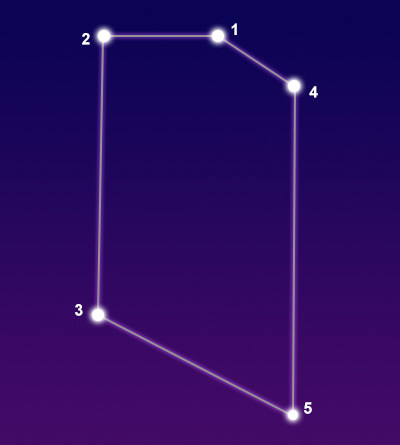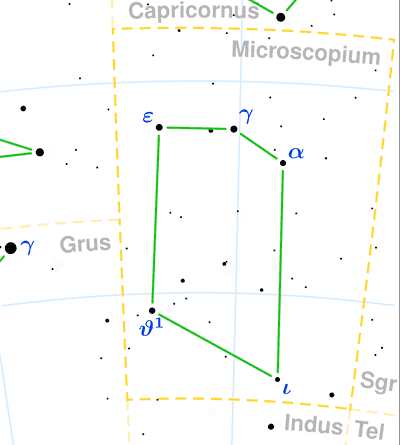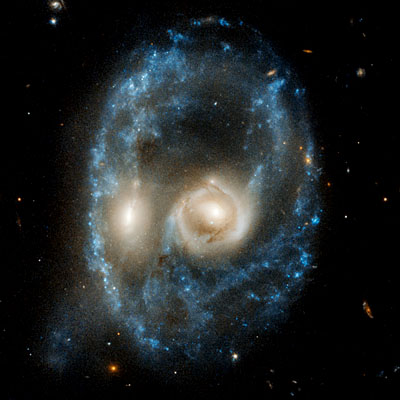Pronunciation:
(MY-kroh-SCOH-pee-um)Abbreviation:
MicGenitive:
MicroscopiiRight Ascension:
21 hoursDeclination:
-35 degreesArea in Square Degrees:
210Crosses Meridian:
9 PM, September 20Visible Between Latitudes:
45 and -90 degreesThe constellation Microscopium, the microscope, is located in the southern hemisphere of the sky. It is visible at latitudes south of 45 degrees between July and September. It is a small constellation, occupying only 210 square degrees of the sky. This ranks it 66th in size among the 88 constellations in the night sky. It is bordered by Capricornus to the north, Piscis Austrinus and Grus to the west, Sagittarius to the east, and Indus to the south, touching on Telescopium to the southeast.
There is no mythology associated with Microscopium. It was named by Abbé Nicolas Louis de Lacaille to honor the invention of the microscope. It is one of several constellations named by Lacaille for scientific instruments after his trip to the Cape of Good Hope to study the southern night sky. It was named after an early type of compound microscope that was used in the 18th century. Lacaille described the constellation as “a tube above a square box.”

points of interest below © Sea and Sky

© Torsten Bronger CC BY-SA 3.0
Epsilon Microscopii
Theta-1 Microscopii
Alpha Microscopii
Iota Microscopii
N/A
N/A
N/A
N/A
White Dwarf Star
Wide Double Star
Yellow Giant Star
Yellow-White Dwarf Star
4.72
4.81
4.88
5.13
Microscopium is an extremely dim and unremarkable constellation. It contains no stars brighter then magnitude 4. The brightest star is Gamma Microscopii with a visual magnitude of only 4.68. It is a yellow giant star located 381 light years from Earth. It represents the eyepiece of the microscope. The second brightest star is Epsilon Microscopii with a magnitude of only 4.72. It is a white dwarf star that lies approximately 182 light years away.
Microscopium contains no Messier objects and only a few deep-sky objects. A few extremely dim and distant galaxies can be found here that can only be seen with very large telescopes. The most notable of these is a pair of colliding galaxies known as Arp-Madore 2026-424. All though the galaxies are colliding, the space between stars is so vast it is unlikely any of them will come into contact with one other. Instead, gravity will distort the shapes of both galaxies as they continue to pass through each other.

© ESA/Hubble / CC BY 4.0



